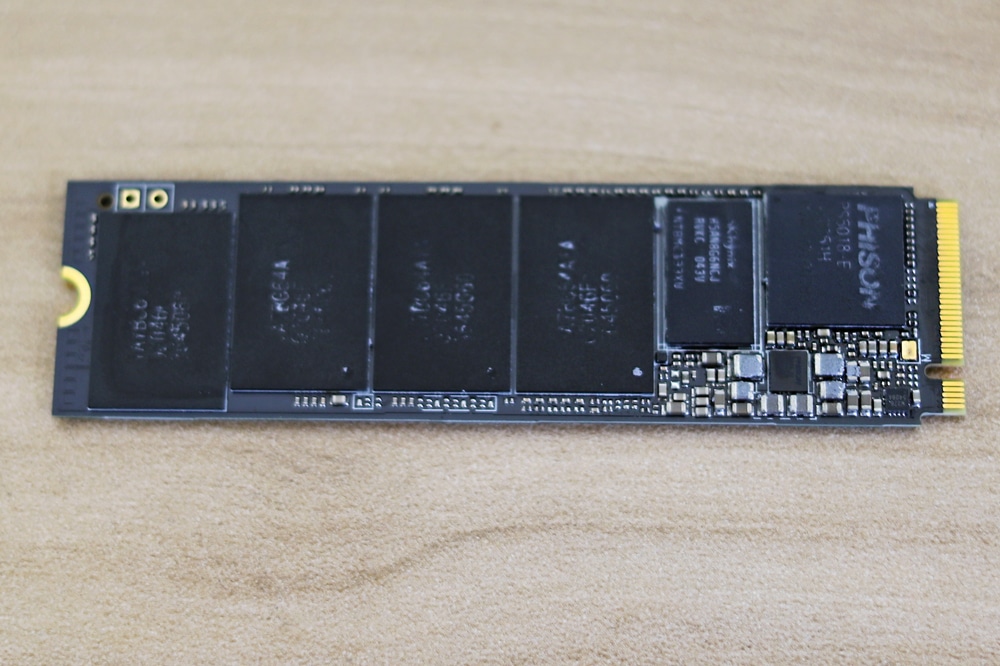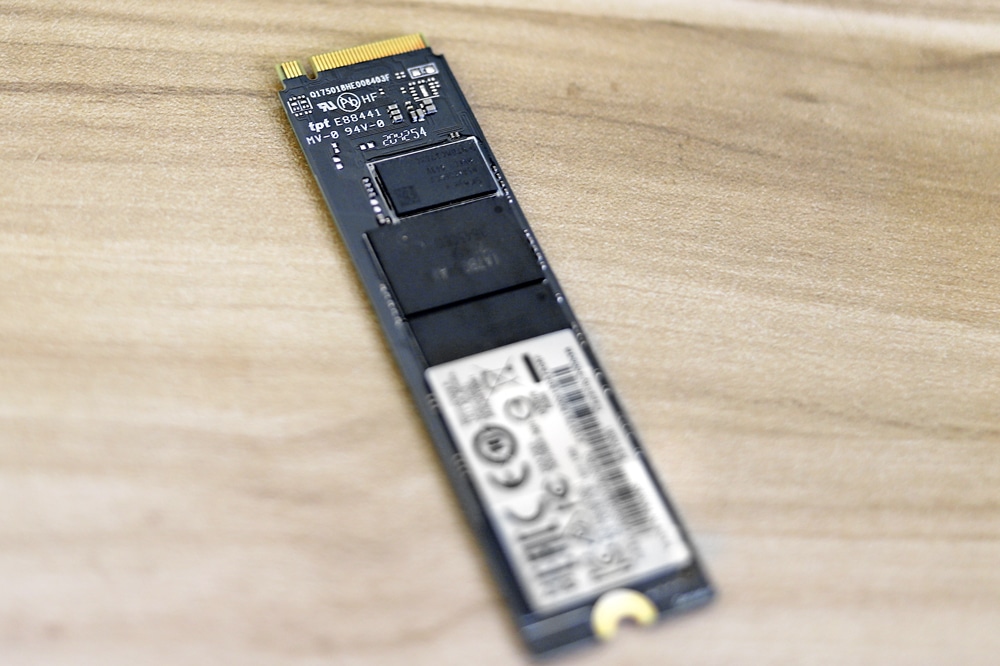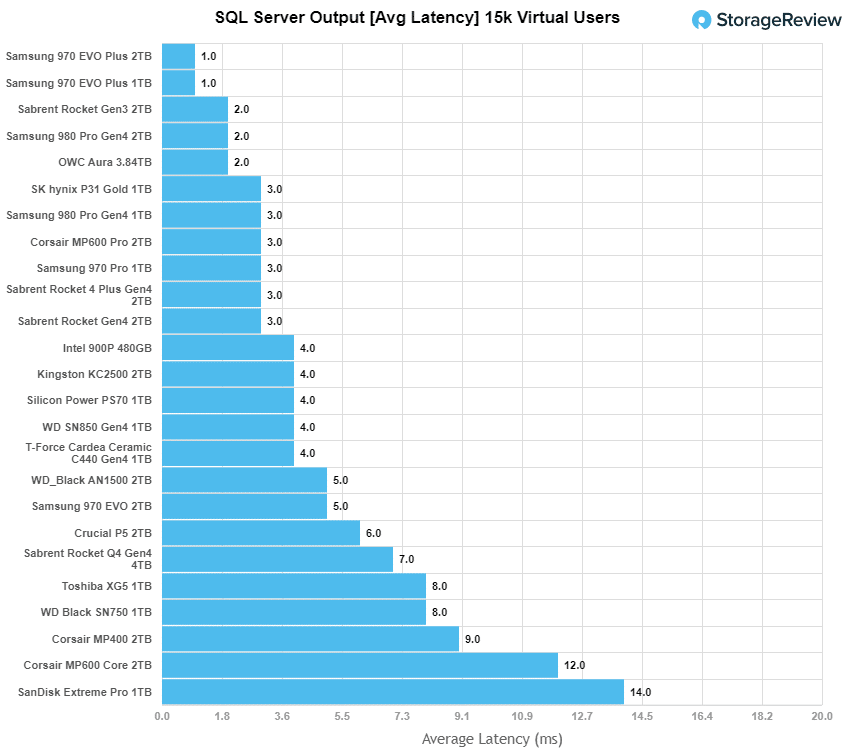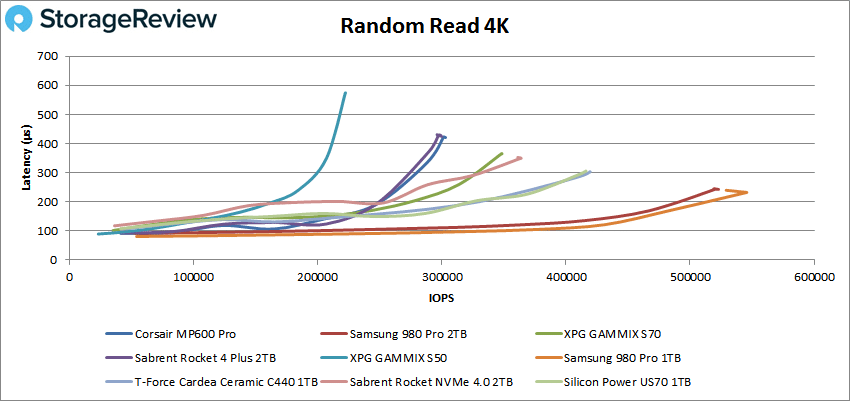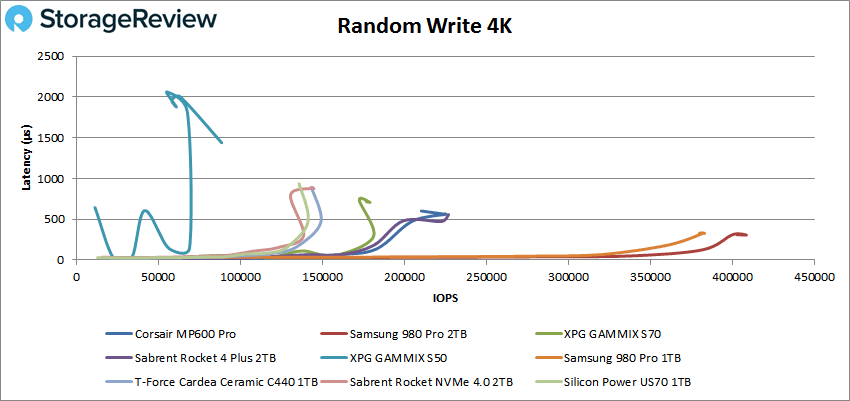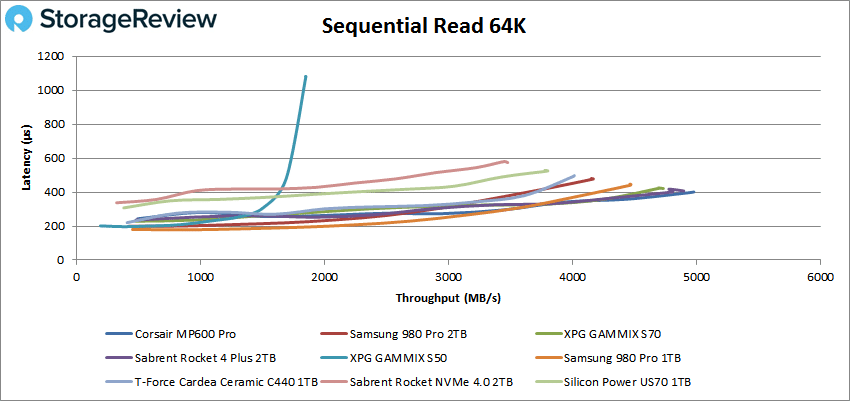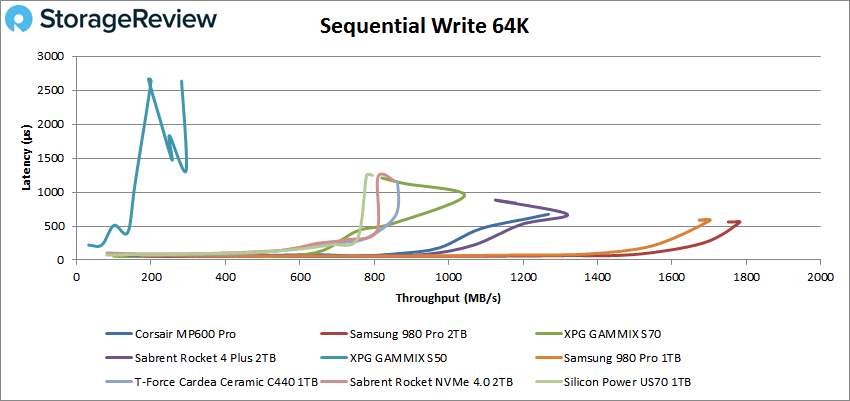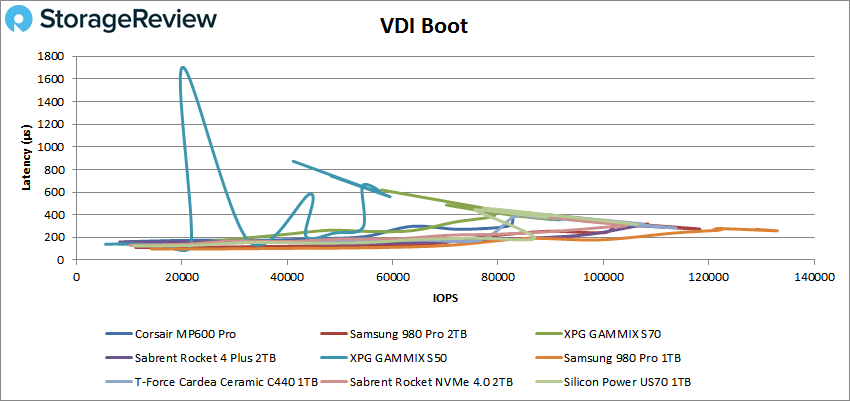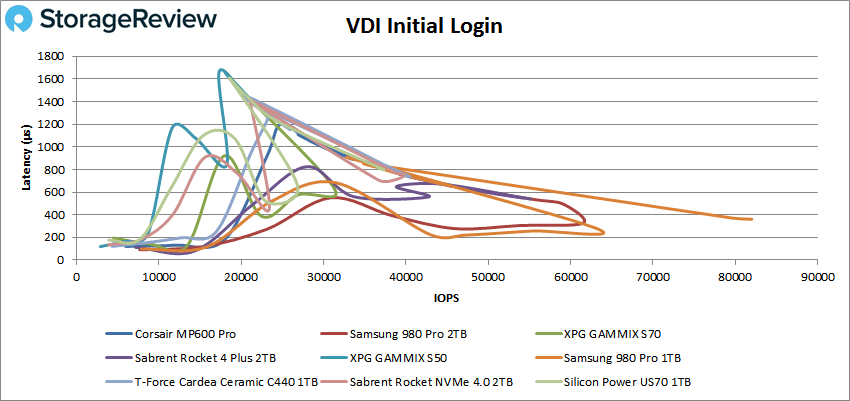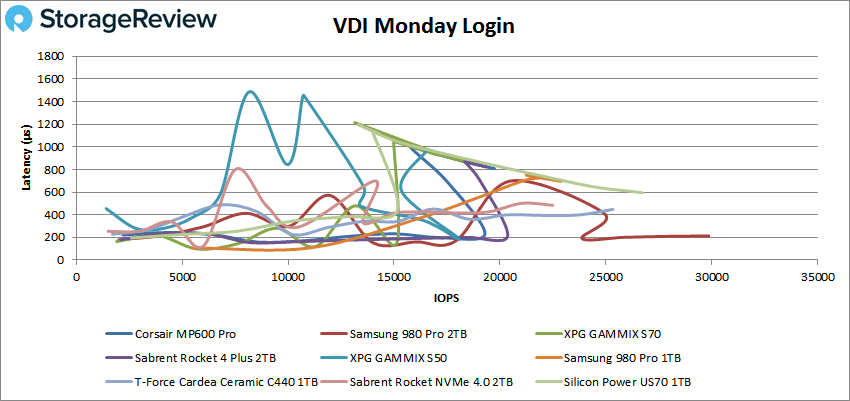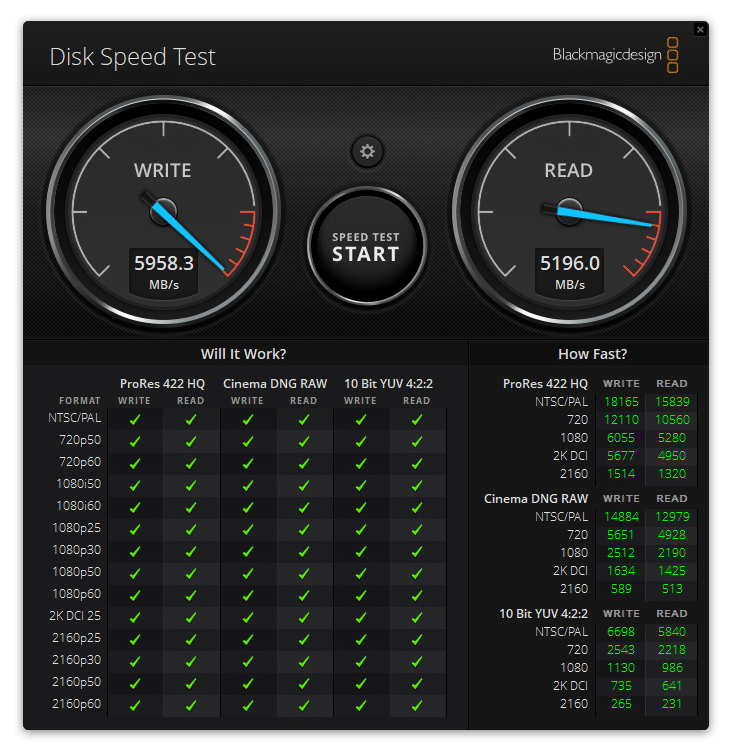Along with the MP600 Core, Corsair has released another PCIe Gen4 SSD with the Corsair MP600 Pro. Being a Pro version, this drive comes with higher performance claims, 7GB/s read, and 6.55GB/s write for the 2TB capacity. The MP600 Pro is an M.2 2280 form factor that fits in most rigs assuming there is room for the heat spreader. This drive is aimed at those that need the extra performance such as gamers and creative professionals.
Along with the MP600 Core, Corsair has released another PCIe Gen4 SSD with the Corsair MP600 Pro. Being a Pro version, this drive comes with higher performance claims, 7GB/s read, and 6.55GB/s write for the 2TB capacity. The MP600 Pro is an M.2 2280 form factor that fits in most rigs assuming there is room for the heat spreader. This drive is aimed at those that need the extra performance such as gamers and creative professionals.
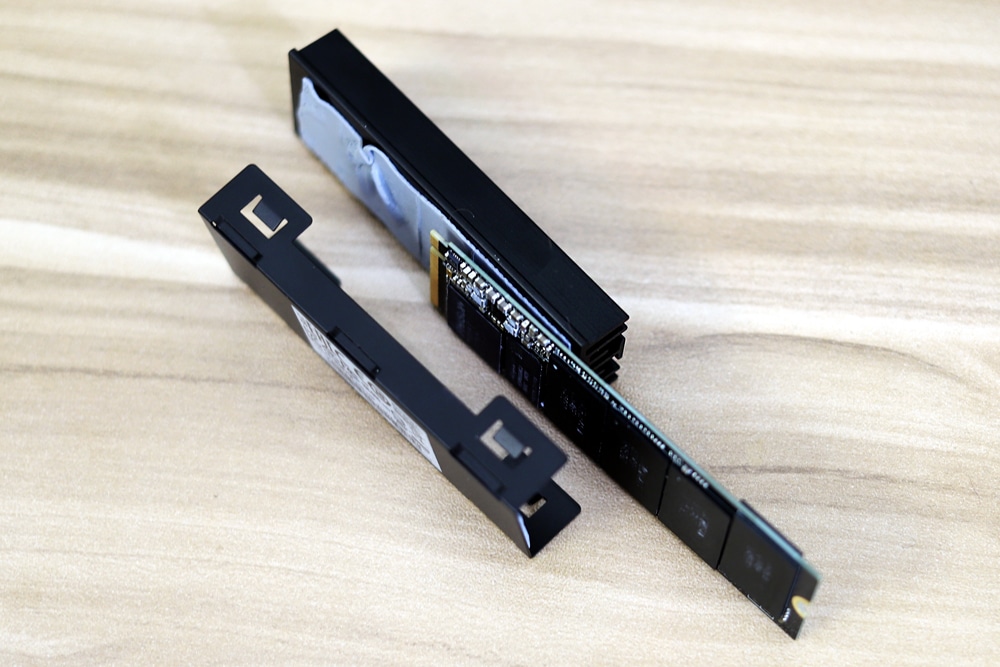
Like the Core version, the Corsair MP600 Pro comes with a large heat spreader. However, there is also a Hydro X version that takes the bulky add-ons to another level with liquid cooling across the water block. While there is no performance difference between the two, the Hydro X is said to be able to sustain high performance longer. Perhaps, but all the bulkiness on M.2 drives seems to miss the point for me. The appeal of these “gum stick” drives is that they are very small and take up nearly no room. Throwing a bunch of stuff on it seems to defeat that point when they can be added to bulkier drives like 2.5” or AIC cards. That said, the heat dissipation devices do add a certain “cool factor.”
The Corsair MP600 Pro leverages 3D TLC NAND for both better performance and endurance. Corsair claims 1400 TBW and a life span of 280 years or 5.49 African elephant lifespans. This strange comparison comes from the company, not from us.
The drive comes in both 1TB and 2TB capacities and can be picked up for $244 for the smaller size.
Corsair MP600 Pro Specifications
| Application Consumer | Client |
| SSD Unformatted Capacity | 2TB |
| Form Factor | M.2 2280 |
| NAND Technology | 3D TLC NAND |
| SSD Interface | PCIe Gen 4.0 x4 |
| SSD Smart Support | Yes |
| SSD Max Sequential Read CDM | Up to 7,000MB/s |
| SSD Max Sequential Write CDM | Up to 6,550MB/s |
| Max Random Write QD32 IOMeter | Up to 800K IOPS |
| Max Random Read QD32 IOMeter | Up to 660K IOPS |
| Dimensions | 80mm x 23mm x 15mm |
| Weight | 0.034kg |
| Endurance | 1400TBW |
| TBW | 1400 |
| MTBF | 1,700,000 Hours |
| Voltage | 3.3V, +/- 5% |
| DEVSLP | PS4: <2mW |
| Encryption | AES 256-bit Encryption |
| Storage Temperature | -40°C to +85°C |
| SSD Operating Temperature | 0°C to +70°C |
| Storage Humidity | 93% RH (40° C) |
| Operating Humidity | 90% RH (40° C) |
| SSD Shock | 1500 G |
| Vibration | 20Hz~80Hz/1.52mm, 80Hz~2000Hz/20G |
Corsair MP600 Pro Design and Build
As stated, there are two versions of the Corsair MP600 Pro, the Hydro model with the liquid cooling hoses, and the one we have here. The version being reviewed actually looks much like the MP600 Core. It has a built-in heat spread on one side with company branding.
Beneath the heat spreader is the NAND packs and Phison E16 controller.
Corsair MP600 Pro Performance
Testbed
As we migrate into testing newer NVME Gen4 SSDs, it required a platform shift in our lab to support the newer interface. Lenovo has been out in the front of the pack with PCIe Gen4 support, including up to the front-mount U.2 bays, while others still only offer edge-card support. In our Gen4 reviews, we leverage the Lenovo ThinkSystem SR635 server, equipped with an AMD 7742 CPU and 512GB of 3200Mhz DDR4 memory.
NVMe is tested natively through an M.2 to PCIe adapter card in the edge-card slot, while U.2 drives are loaded in the front. The methodology used better reflects end-user workflow with the consistency, scalability, and flexibility testing within virtualized server offers. A large focus is put on drive latency across the entire load range of the drive, not just at the smallest QD1 (Queue-Depth 1) levels. We do this because many of the common consumer benchmarks don’t adequately capture end-user workload profiles.
SQL Server Performance
Each SQL Server VM is configured with two vDisks: 100GB volume for boot and a 500GB volume for the database and log files. From a system resource perspective, we configured each VM with 16 vCPUs, 64GB of DRAM and leveraged the LSI Logic SAS SCSI controller. While our Sysbench workloads tested previously saturated the platform in both storage I/O and capacity, the SQL test is looking for latency performance.
This test uses SQL Server 2014 running on Windows Server 2012 R2 guest VMs and is stressed by Quest’s Benchmark Factory for Databases. StorageReview’s Microsoft SQL Server OLTP testing protocol employs the current draft of the Transaction Processing Performance Council’s Benchmark C (TPC-C), an online transaction-processing benchmark that simulates the activities found in complex application environments.
The TPC-C benchmark comes closer than synthetic performance benchmarks to gauging the performance strengths and bottlenecks of storage infrastructure in database environments. Each instance of our SQL Server VM for this review uses a 333GB (1,500 scale) SQL Server database and measures the transactional performance and latency under a load of 15,000 virtual users.
SQL Server Testing Configuration (per VM)
- Windows Server 2012 R2
- Storage Footprint: 600GB allocated, 500GB used
- SQL Server 2014
- Database Size: 1,500 scale
-
- Virtual Client Load: 15,000
- RAM Buffer: 48GB
- Test Length: 3 hours
-
- 2.5 hours preconditioning
- 30 minutes sample period
Looking at SQL Server average latency, the Corsair MP600 Pro had 3ms latency putting it near the top of the pack.
VDBench Workload Analysis
When it comes to benchmarking storage devices, application testing is best, and synthetic testing comes in second place. While not a perfect representation of actual workloads, synthetic tests do help to baseline storage devices with a repeatability factor that makes it easy to do apples-to-apples comparison between competing solutions. These workloads offer a range of different testing profiles ranging from “four corners” tests, common database transfer size tests, to trace captures from different VDI environments.
All of these tests leverage the common vdBench workload generator, with a scripting engine to automate and capture results over a large compute testing cluster. This allows us to repeat the same workloads across a wide range of storage devices, including flash arrays and individual storage devices. Our testing process for QLC SSDs starts with a secure erase, then we partition the drive to 1% of the drive capacity to simulate how the drive might respond to smaller application workloads. This is different from full entropy tests which use 100% of the drive and take them into steady state. As a result, these figures will reflect higher-sustained write speeds.
Profiles:
- 4K Random Read: 100% Read, 128 threads, 0-120% iorate
- 4K Random Write: 100% Write, 64 threads, 0-120% iorate
- 64K Sequential Read: 100% Read, 16 threads, 0-120% iorate
- 64K Sequential Write: 100% Write, 8 threads, 0-120% iorate
Comparables for this review:
- Samsung 980 Pro 2TB
- Samsung 980 Pro 1TB
- XPG GAMMIX S70
- XPG GAMMIX S50
- Sabrent Rocket 4 2TB
- Sabrent Rocket 4 Plus 2TB
- T-Force Cardea Ceramic C440
- Silicon Power US70 1TB
In 4K random read, the Corsair MP600 Pro came in seventh with a peak performance of 302,924 IOPS with a latency of 421µs.
For 4K random write the MP600 Pro peaked in fourth with 225,165 IOPS and a latency of 563µs followed by a slight drop off.
Switching to sequential workloads we look to our 64K tests. In read the MP600 Pro took the top spot with 79,608 or 4.98GB/s at a latency of 401µs.
In 64K write the MP600 Pro fell back to fourth with a peak of 20,290 IOPS or 1.27GB/s at a latency of 675µs.
Next, we looked at our VDI benchmarks, which are designed to tax the drives even further. These tests include Boot, Initial Login, and Monday Login. Looking at the Boot test, the Corsair MP600 Pro came in seventh with a peak of 93,086 IOPS and a latency of 368µs.
In VDI Initial Login the MP600 Pro came in fourth with a peak of 42,230 IOPS and a latency of 706µs.
Finally, in VDI Monday Login the Corsair drive came in sixth with a peak of 19,714 IOPS and a latency of 809µs.
BlackMagic
To further test the Corsair MP600 Pro, we ran the Blackmagic Disk Speed Test on the Lenovo ThinkStation P620.
Here we saw the MP600 Pro hit 5.2GB/s read and 5.96GB/s write. The read score here is impressive but the write is doubly so as it blows some of the other top PCIe Gen4 drives away.
| Blackmagic Disk Speed | ||
| Drive | Read | Write |
| Corsair MP600 Pro | 5.2GB/s | 5.96GB/s |
| Samsung 980 Pro 2TB | 5.28GB/s | 4.34GB/s |
| Samsung 980 Pro 1TB | 5.14GB/s | 2.85GB/s |
| XPG GAMMIX S70 | 4.75GB/s | 4.92GB/s |
| Sabrent Rocket 4 2TB | 3.88GB/s | 3.72GB/s |
| Sabrent Rocket 4 Plus 2TB | 5.34GB/s | 5.9GB/s |
| T-Force Cardea Ceramic C440 | 3.94GB/s | 4.07GB/s |
| Silicon Power US70 1TB | 3.97GB/s | 3.88GB/s |
Conclusion
The Corsair MP600 Pro is an M.2 SSD aimed at delivering high performance. While it looks near identical to the Corsair MP600 Core, the Pro leverages TLC NAND versus the Core’s QLC for higher performance and good endurance. The drive comes with quoted speeds of 7GB/s read and 6.55GB/s write and in capacities of 1TB and 2TB. There is also a liquid-cooled, Hydro X version for those that need optimal performance over time.
For performance, we ran our Application Workload Analysis in the form of SQL Server latency, our VDBench Workloads, and Blackmagic. For SQL Server latency the Corsair MP600 Pro had an aggregate average latency of 3ms. In our VDBench tests, the MP600 Pro saw highlights of 303K IOPS in 4K read, 225K IOPS in 4K write, 4.98GB/s in 64K read (the overall highest score out of any PCIe Gen4 drives), and 1.27GB/s in 64K write. For VDI we saw the drive hit 93K IOPS in boot, 42K IOPS in Initial Login, and 20K IOPS in Monday Login. For Blackmagic, the drive was able to hit 5.2GB/s read and 5.96GB/s write.
The Corsair MP600 Pro is an M.2 SSD that delivers decent performance overall and really shined in two of our tests. In 64K read and Blackmagic the MP600 Pro really shined and beat out the previous top-performing drive. Like the MP600 Core, the drive comes with a large heat spreader that limits where it can be installed.
Engage with StorageReview
Newsletter | YouTube | Podcast iTunes/Spotify | Instagram | Twitter | Facebook | RSS Feed

